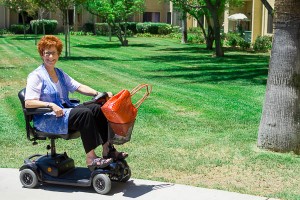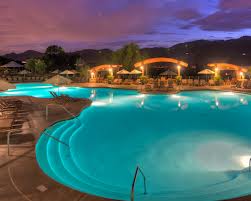
by Diane Masson | Aug 10, 2014
 After you share your tale of customer service woe to a representative, you are told that the manager will call you back the next day. Do they?!? Recently, I believed a manager from the Welk Resort would call me back to discuss my timeshare fiasco. In fact, I waited two hours past the day and time the representative promised a manager would call me. Telling me a date and time for the manager’s call is a very specific promise in my book.
After you share your tale of customer service woe to a representative, you are told that the manager will call you back the next day. Do they?!? Recently, I believed a manager from the Welk Resort would call me back to discuss my timeshare fiasco. In fact, I waited two hours past the day and time the representative promised a manager would call me. Telling me a date and time for the manager’s call is a very specific promise in my book.
After my Welk Resort Fiasco blog posted for the world to read, the Welk Resort tweeted me. Here is their damage control twitter conversation:
@Market2Seniors – This is not the experience we aim to provide & we apologize. Could you DM us your email so we can reach out for more info?
@welkresorts – I reached out in 3 ways with no response, a manager was supposed to call me back by 9am on Sun. The blog posted at 11am, Sun.
@Market2Seniors – or you can email our Director of Consumer Affairs at Hutch.farrell@welkgroup.com if you’d prefer. Thanks for the feedback
@welkresorts – You can contact me at diane@marketing2seniors.net.
@Market2Seniors – Thank you. I’ll have Hutch contact you.
This was my last contact with the Welk Resort. I NEVER had a manager email me, tweet me or call me again. Why not? Why would a company have a Director of Consumer Affairs? Obviously they must have ongoing customer service issues. Why did “Hutch” never contact me? Maybe he never got the tweet? Maybe they thought I would forget that the sales people promised me a Catalina Island overnight on a weekend and what I received was a weekday trip that I could not use.
Have you had an experience where you were told the manager is going to call you back because they were not currently there?
Is this just a technique to calm down a frustrated customer and hope we forget? Or is it a way for a “C” player (last week I compared “A”, “B” and “C” players here) to not deal with you directly? Maybe it is simply passing the buck.
Your tips could help others improve on a national basis, so please share by commenting on this blog. If this weekly newsletter can help your sales and occupancy – why not sign up today so you don’t miss a single one?
Diane Twohy Masson writes this weekly blog to support and engage with other senior housing professionals. Her first book is Senior Housing Marketing – How To Increase Your Occupancy and Stay Full. Many sales teams and organizations have used the 12 keys contained in this book for their weekly book review. Diane is working on her second book to help seniors select their senior housing options.
© Marketing 2 Seniors| Diane Twohy Masson 2014 All Rights Reserved. No part of this blog post may be reproduced, copied, modified or adapted, without the prior written consent of the author, unless otherwise indicated for stand-alone materials. You may share this website and or it’s content by any of the following means: 1. Using any of the share icons at the bottom of each page. 2. Providing a back-link or the URL of the content you wish to disseminate. 3. You may quote extracts from the website with attribution to Diane Masson CASP and link https://www.marketing2seniors.net For any other mode of sharing, please contact the author Diane Masson.

by Diane Masson | Aug 3, 2014

“A”, “B” or “C” Players?
What’s the difference between an “A”, “B” or “C” player in senior living sales or in any sales profession?
“A” Players
- Produce 80% of the work
- Are always positive
- Good self image
- Find or create solutions to challenges
- Embrace strategizing sales
- Top sales performer in the company
“B” Players
- Do more than “C” players and way less than “A” players
- Are equally positive and negative
- Average or okay self image
- Need help solving challenges
- Tolerate strategizing sales
- Consistent low to average volume of sales
“C” Players
- Do 20% of the work, but act like they do way more
- Whine and complain a lot
- Poor self image
- Are usually a part of the challenge
- Resent strategizing sales
- Say it’s not their fault that they don’t have sales
Here is the good news! Congratulations if you are lucky to enough to be or have some “A” players on your sales team. Resources and coaching support can help some “B” players become “A” players. Others may remain good consistent “B” players. “C” players need to be evaluated to determine if they have any hope to improve. If they do not, let them go, because they don’t really want to work for you or anyone else.
Are you willing to share whether you or your senior living sales team mates are “A”, “B” or “C” players? What other factors contributed to your decision?
Photo Credit: © Jim Barber – Fotolia.com
Please share your strategies, successes, failures or comment below to join the conversation and interact with other senior living professionals on what is currently being effective to increase occupancy on a nationwide basis.
Diane Twohy Masson is the author of “Senior Housing Marketing – How to Increase Your Occupancy and Stay Full,” available at Amazon.com with a 5-star rating. The book is required reading at George Mason University as a part of its marketing curriculum. Within this book, the author developed a sales & marketing method with 12 keys to help senior living providers increase their occupancy. Masson developed this expertise as a marketing consultant, sought-after blogger for senior housing and a regional marketing director of continuing care retirement communities in several markets. She has also been a corporate director of sales and a mystery shopper for independent living, assisted living, memory care and skilled care nursing communities in multiple states. Currently, Masson is setting move-in records as the regional marketing director of two debt-free Continuing Care Retirement Communities in Southern California – Freedom Village in Lake Forest and The Village in Hemet, California. Interestingly, this career started when she was looking for a place for her own mom and helped her loved one transition through three levels of care.
© Marketing 2 Seniors| Diane Twohy Masson 2014 All Rights Reserved. No part of this blog post may be reproduced, copied, modified or adapted, without the prior written consent of the author, unless otherwise indicated for stand-alone materials. You may share this website and or it’s content by any of the following means: 1. Using any of the share icons at the bottom of each page. 2. Providing a back-link or the URL of the content you wish to disseminate. 3. You may quote extracts from the website with attribution to Diane Masson CASP and link https://www.marketing2seniors.net For any other mode of sharing, please contact the author Diane Masson.

by Diane Masson | Jul 27, 2014

Diane Masson at The Village in Hemet, CA
A broken toe and a scheduled photo shoot at a retirement community does not go well together. As I was hobbling around, trying to tough it out, the pain intensified. I needed a “plan b”. It was my lucky day, because the wonderful resident I called for a favor had a second motorized wheelchair. So he let me borrow his electric cart.
Electric carts are fun to drive like a speed demon down the hall, but the reality of using one can quickly set in. I had to navigate a photo shoot on several different floors in tight spaces. Some of the photo scenes were in the dining room and the arms of the electric cart seemed to reach out and grab tablecloths. Then the neatly placed silverware would become disheveled. At each mishap, I took the time to restore the silverware to its original placement. It was lucky that I could stand on one foot to accomplish this.
When I pulled the cart up to my office, off the lobby, it was so much easier to leave it by the door so I could limp in. Then my mind starting remembering all the times I had complained about residents leaving their carts in the lobby when they went on trips. If you can’t walk, how can you park your cart in an inconspicuous location and hobble to the bus? It’s impossible.
Elevators were an experience too. I am able bodied, but residents using electric carts are not as flexible. I had to really stretch to reach the elevator button. When I rolled onto the elevator, I had to twist back to hit the second floor button. I couldn’t imagine an arthritic resident being able to manage this. Then when the doors opened on my floor, I had to drive backwards and turn the cart around. This required craning my neck around so I would not hit a wall or a resident. Later I learned that some residents use a walking cane to push buttons for the elevator.
Yes, I bumped into a few walls and doorways. But I didn’t create one of those famous black streaks on the wall that the maintenance team constantly paints. It’s not hard for me to imagine how those black marks appear daily. Particularly, if two residents with carts are passing each other in the hall and each is trying to give the other a wide berth.
Watching people’s reactions was really interesting too. Some said, “How’s driving?” or “Do you have a license?” or “What happened?” or “Having fun?” The best part was talking with residents who use an electric cart daily. They loved watching me roll in the cart and understanding what it was like for them.
You don’t have to have a broken toe like me to try an electric cart for a day. What if all your senior living department heads had to accomplish all their work while using an electric cart for a day? Who’s first? Your residents will love you.
Your tips could help others improve on a national basis, so please share by commenting on this blog. If this weekly blog can help your sales and occupancy – why not sign up today so you don’t miss a single one?
Diane Twohy Masson writes this weekly blog to support and engage with other senior housing professionals. Her first book is Senior Housing Marketing – How To Increase Your Occupancy and Stay Full. Many sales teams and organizations have used the 12 keys contained in this book for their weekly book review. Diane is working on her second book to help seniors select their senior housing options.
© Marketing 2 Seniors| Diane Twohy Masson 2014 All Rights Reserved. No part of this blog post may be reproduced, copied, modified or adapted, without the prior written consent of the author, unless otherwise indicated for stand-alone materials. You may share this website and or it’s content by any of the following means: 1. Using any of the share icons at the bottom of each page. 2. Providing a back-link or the URL of the content you wish to disseminate. 3. You may quote extracts from the website with attribution to Diane Masson CASP and link https://www.marketing2seniors.net For any other mode of sharing, please contact the author Diane Masson.

by Diane Masson | Jul 20, 2014

Welk Resort in Escondido, CA
I was a sucker to think it would be fun for my husband and I to go on a timeshare presentation at the Lawrence Welk Resort. My Auntie watched Lawrence Welk every week when I was little. It was supposed to be a fabulous place and seniors from two of my Continuing Care Retirement Communities go there regularly for performances. Our promised gift for participating in a 90 presentation was going to a trip for two to Catalina Island.
Well here are the 12 sales no no’s that happened:
- Promising that the appointment would be 90 minutes and then almost doubling the time.
- Asking us to arrive early and then making us wait.
- Pushing a person for personal information in a non-genuine or unnatural manner. (This is so uncomfortable!)
- Not listening!
- Giving a canned speech with a pitch type voice.
- Sharing long boring stories and wasting our time.
- Giving a promise that the company cannot fulfill.
- After not listening, asking a closing question, when there was nothing to close on. (This is so wrong!)
- Failing to give us the promised gift.
- Lying.
- Trapping us in several closing sequences, because a golf cart was required to return us to our far off parking spot.
- Making me feel like a number.
The appointment was almost three hours instead of the promised 90 minutes. They persisted in a quest for our personal information (very awkward) without sharing the facts of their offering in a timely fashion. They absolutely never listened and it was all a canned speech. The worst is having someone try to close you, when there is zero interest. You might be thinking, Diane, just leave. There is no way to leave early because they force you to park your car in an area that requires a golf cart to return to it. If all of that was not bad enough, the promised gift to Catalina was a lie. I prequalified two people that our trip could be on a weekend. The mail away certificate was for mid-week only.
So I sent an email explaining my disappointment and that I would be writing a blog post that 1000’s of people would view. I figured they would call me immediately and rectify the situation. How could Lawrence Welk Resorts possible sell all those timeshares treating people in this unsavory manner?
Ultimately, a timeshare fiasco can make a senior suspicious of real genuine sales people in senior housing. How many times has a senior walked into your senior living community with his or her arms crossed? Do you enjoy watching a senior open up midway through a “wow tour?”
Please share your strategies, successes, failures or comment below to join the conversation and interact with other senior living professionals on what is currently being effective to increase occupancy on a nationwide basis.
Diane Twohy Masson is the author of “Senior Housing Marketing – How to Increase Your Occupancy and Stay Full,” available at Amazon.com with a 5-star rating. The book is required reading at George Mason University as a part of its marketing curriculum. Within this book, the author developed a sales & marketing method with 12 keys to help senior living providers increase their occupancy. Masson developed this expertise as a marketing consultant, sought-after blogger for senior housing and a regional marketing director of continuing care retirement communities in several markets. She has also been a corporate director of sales and a mystery shopper for independent living, assisted living, memory care and skilled care nursing communities in multiple states. Currently, Masson is setting move-in records as the regional marketing director of two debt-free Continuing Care Retirement Communities in Southern California – Freedom Village in Lake Forest and The Village in Hemet, California. Interestingly, this career started when she was looking for a place for her own mom and helped her loved one transition through three levels of care.
© Marketing 2 Seniors| Diane Twohy Masson 2014 All Rights Reserved. No part of this blog post may be reproduced, copied, modified or adapted, without the prior written consent of the author, unless otherwise indicated for stand-alone materials. You may share this website and or it’s content by any of the following means: 1. Using any of the share icons at the bottom of each page. 2. Providing a back-link or the URL of the content you wish to disseminate. 3. You may quote extracts from the website with attribution to Diane Masson CASP and link https://www.marketing2seniors.net For any other mode of sharing, please contact the author Diane Masson.

by Diane Masson | Jul 13, 2014

Hippie Retirement Communities?
A younger senior woman with long hair and beads asked me this question at a presentation last week. I asked what a hippie retirement community would look like for her. She said, “Less walls and more indoor and outdoor living. Where you felt outdoors, even when you were indoors.”
This made me think about our outdoor dining venues, so I showed her the “Fountain Café at The Village.” It is an outdoor dining venue, where the chef barbeques for the residents. Entrée choices might be barbequed salmon, ribs or an amazing burger. Soft music emits from rock speakers that reside in the surrounding garden. Residents can come and sit in the outdoor café at any time to read a book or spend time with visiting family. Beyond the Fountain Café area is the popular putting green.
She loved the outdoor area. I said, “Is this what you are talking about?” She said, “Yes!” Then I explained how the health club with state-of-the-art exercise equipment adjoined the outdoor swimming pool. It has an indoor/outdoor feeling too.
The younger senior loved it and agreed, but said she was not ready for an apartment with walls. Anyone know of a hippie retirement community, maybe something with tents? Are we ready for Boomer hippies?
Can you share what is happening in your city and state, so we can all understand senior housing from a national perspective? It’s as easy as making a comment below. Thanks in advance for joining the conversation and sharing this blog with other professionals in the senior living world.
Diane Twohy Masson is currently writing a new book for seniors on how to select senior housing options. Her first book, “Senior Housing Marketing – How to Increase Your Occupancy and Stay Full,” is available at Amazon.com with a five star rating. Masson continues to set move in records as the regional marketing director of two debt-free Continuing Care Retirement Communities in Southern California – Freedom Village in Lake Forest and The Village in Hemet, California. Her mom’s struggle with dementia is inspiring Diane to pen a third book to support adult children.
© Marketing 2 Seniors| Diane Twohy Masson 2014 All Rights Reserved. No part of this blog post may be reproduced, copied, modified or adapted, without the prior written consent of the author, unless otherwise indicated for stand-alone materials. You may share this website and or it’s content by any of the following means: 1. Using any of the share icons at the bottom of each page. 2. Providing a back-link or the URL of the content you wish to disseminate. 3. You may quote extracts from the website with attribution to Diane Masson CASP and link https://www.marketing2seniors.net For any other mode of sharing, please contact the author Diane Masson.

 After you share your tale of customer service woe to a representative, you are told that the manager will call you back the next day. Do they?!? Recently, I believed a manager from the Welk Resort would call me back to discuss my timeshare fiasco. In fact, I waited two hours past the day and time the representative promised a manager would call me. Telling me a date and time for the manager’s call is a very specific promise in my book.
After you share your tale of customer service woe to a representative, you are told that the manager will call you back the next day. Do they?!? Recently, I believed a manager from the Welk Resort would call me back to discuss my timeshare fiasco. In fact, I waited two hours past the day and time the representative promised a manager would call me. Telling me a date and time for the manager’s call is a very specific promise in my book.



